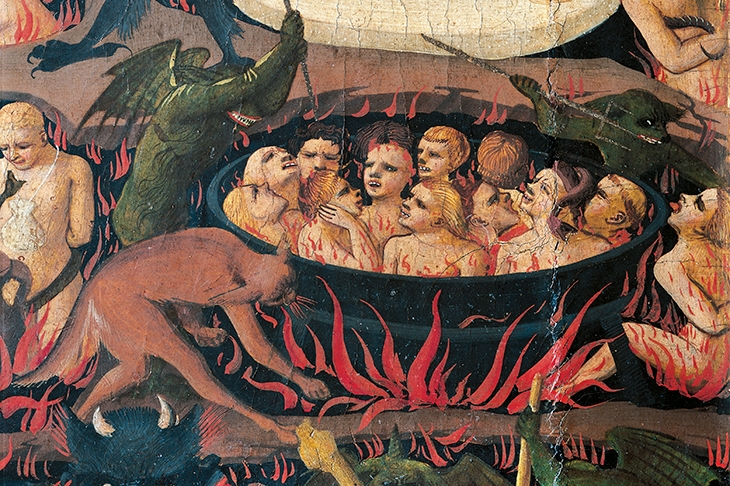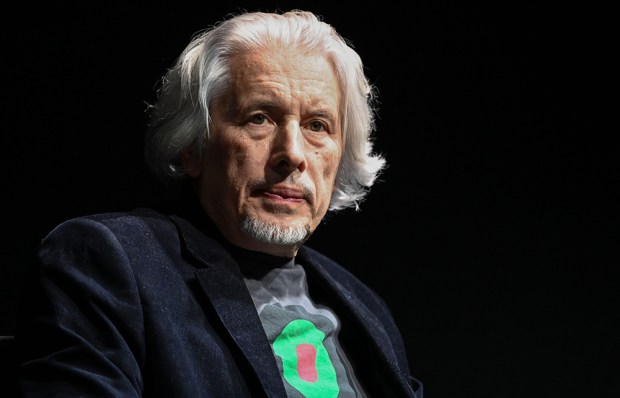Here is a sobering thought for anyone involved in the world of finance. Those who charge interest when they lend money are doomed to spend eternity in a pit with filth up to their knees. This is not the verdict of some radical, online, anti-capitalist echo chamber but of the second-century Apocalypse of Saint Peter, an early Christian text in the form of a graphic tour of heaven and hell, ascribed to the leader of Jesus’s apostles, though not actually written by him.
It offers scant comfort too for those who have sex before marriage: their bodies will be torn to shreds in the afterlife. And for women who have the temerity to plait their hair to make themselves look more attractive: they are damned forever to hang by that same hair over the eternal flames. The point the anonymous author was hammering home to his fellow believers (it might of course have been a woman, but there is something so misogynist about the 21 punishments laid out that I can’t believe so) was a simple one, and all about fear. Be good, do what the rules tell you and you will get your reward in the hereafter. And if you choose not to, don’t say you haven’t been warned!
Though the Apocalypse of Saint Peter —and many of the other vivid early church documents and texts that Bart Ehrman quotes so effectively in his history of the afterlife — never made it into the Christian canon, they reflect the times in which they were written. And they explain, too, in their power and inventiveness, a curious aspect of the Christian legacy in our more secular, sceptical but alas no less fearful times — namely how images of heaven and hell remain so widespread in our collective imagination when so many of us have no link with organised religion.
The sources are not, insists Ehrman —who teaches religious studies at the University of North Carolina — in either the Hebrew Scriptures or the Christian New Testament. And for those — like me, when I read that contention — who immediately start quoting passages where heaven and hell do seem to be precisely the way we think of them now, our lucid guide to these invisible but all-too-present realms carefully explains why such references are misleading. So, for example, the sort of apocalyptic literature seen in the later parts of the Old Testament in the Book of Daniel, and in the final pages of the New in the cosmic battle in the Book of Revelation, were about the establishment of heaven right here on earth, and not up in the clouds as we fondly imagine.
And then there is that resonant scene in Luke’s gospel, where the rich man, Dives, sees Lazarus, the beggar from his gates, being carried up by angels to reside in the ‘bosom of Abraham’ in heaven, while he is left looking up in envy from the torment of hell. But this is, Ehrman shows, a later addition to the text, not something Jesus would ever have spoken about. And it is hard to question him, since he is the academic whose book Misquoting Jesus made it onto the New York Timesbestseller list.
There are, of course, many good reasons to applaud his debunking of the Christian hell, a place of nightmare-inducing torments that was (along with the devil) largely a creation of a Church so keen on controlling the lives of its flock and imposing rules that it departed from the teachings of the Jesus of the gospels. Not the least of them is the fact that recent surveys show 58 per cent of Americans still believe in a literal hell. This book will, hopefully, be balm for them.
Rather more — 72 per cent — cling to the literal notion of heaven, but there is a danger in ascribing wholly cynical motives to those early church writers who shaped its image as a garden paradise and place of reunion with loved ones who have gone before us. Yes, there is undeniably an element of carrot (to go with the stick of hell) in the Christian heaven as ultimate reward, but mixed in there too was — and remains for those clergy who speak about it — a laudably human and compassionate attempt to frame the big questions about life and death, loss and suffering, for which our new ‘god’, science, still has little to offer by way of comfort.
And it is that emotional aspect that is too often lacking in what is otherwise an impressively readable, clear and wide-ranging study. Ehrman is very good on the how, but he offers too little of the backdrop in terms of societal changes and circumstances that would explain the why: why heaven and hell have proved so popular at particular moments. If you don’t explain why people once believed things that today can sound ridiculous, you run the risk of turning the history and practice of religion into at best a curiosity, at worst a freak show.
Got something to add? Join the discussion and comment below.
Get 10 issues for just $10
Subscribe to The Spectator Australia today for the next 10 magazine issues, plus full online access, for just $10.
You might disagree with half of it, but you’ll enjoy reading all of it. Try your first month for free, then just $2 a week for the remainder of your first year.














Comments
Don't miss out
Join the conversation with other Spectator Australia readers. Subscribe to leave a comment.
SUBSCRIBEAlready a subscriber? Log in